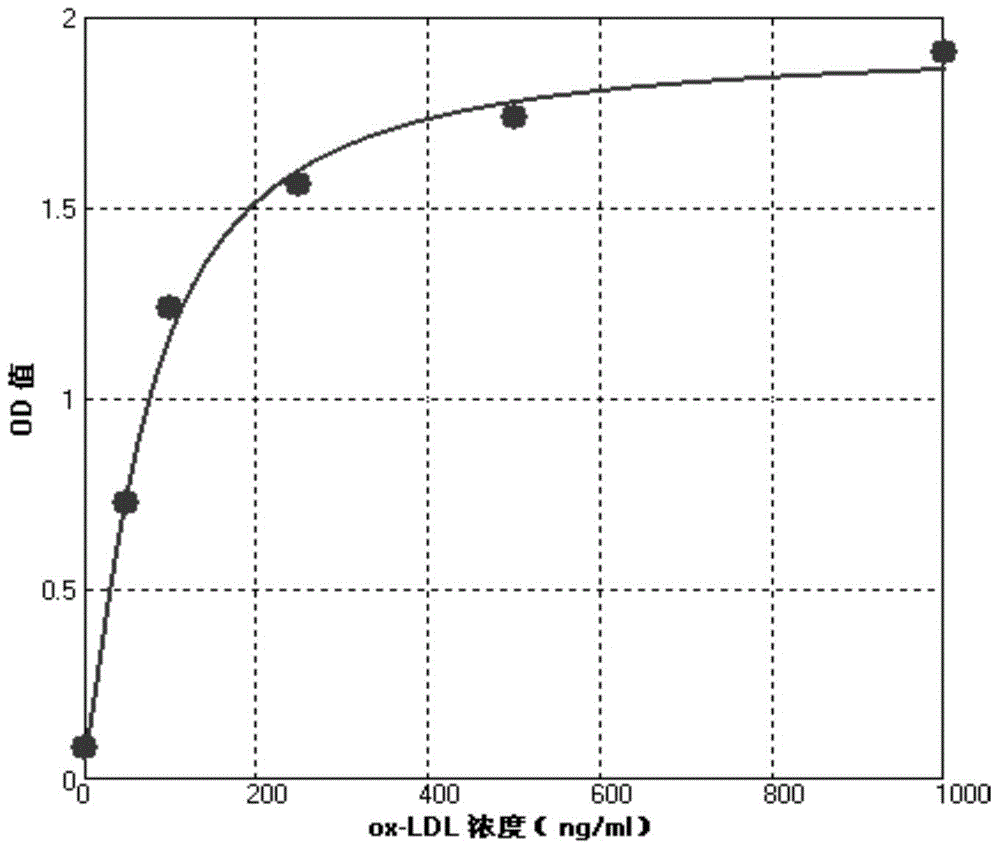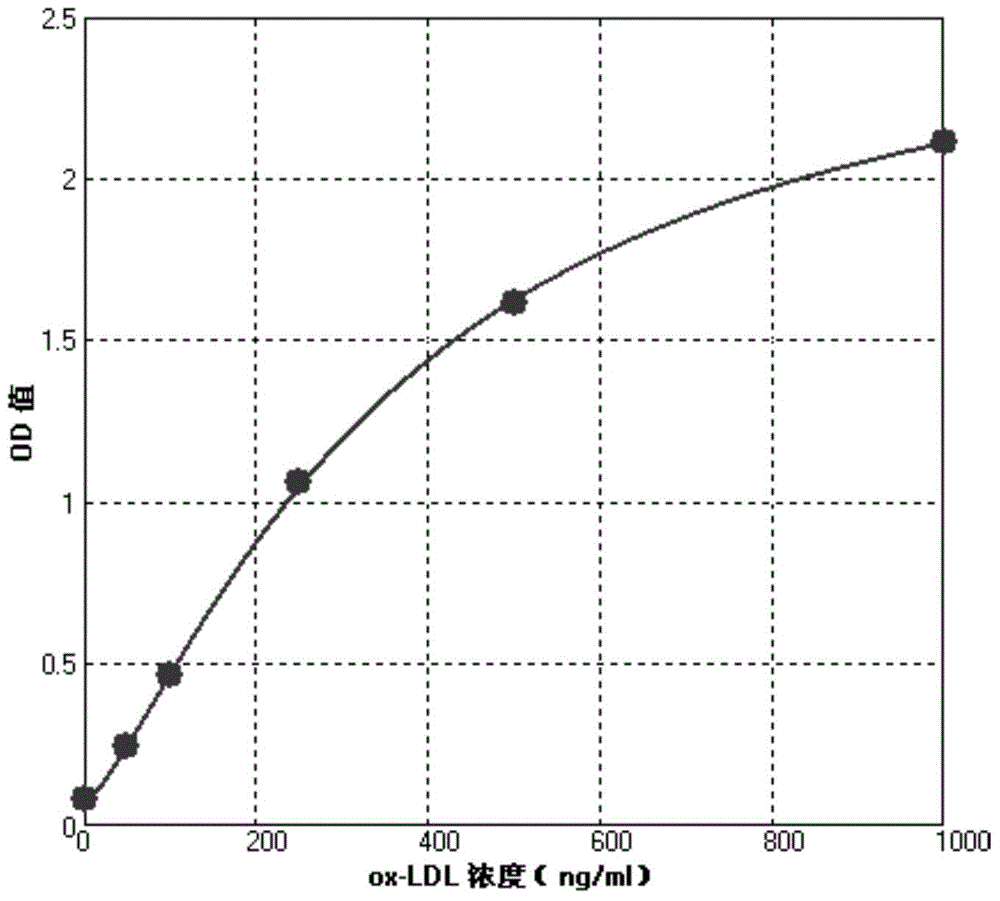Kit for detecting concentration of oxidized low-density lipoprotein in sample and preparation method thereof
A low-density lipoprotein and kit technology, which is applied to a kit for detecting the concentration of oxidized low-density lipoprotein in a sample and the field of its preparation, can solve the problems of high detection cost, cumbersome operation, and high skill requirements for experimental operators, and achieves a high level of improvement. Reliability and accuracy, low detection cost, favorable effect of promotion
- Summary
- Abstract
- Description
- Claims
- Application Information
AI Technical Summary
Problems solved by technology
Method used
Image
Examples
Embodiment 1
[0034] Embodiment 1: preparation of biotin-labeled oxidized low-density lipoprotein clone antibody
[0035] (1) Activation of biotin
[0036] Biotin must be activated before coupling with the oxidized low-density lipoprotein clone antibody. The specific activation steps are as follows: Weigh 25 g of biotin and dissolve it in 30 ml of dimethylformamide solution, and then add N-succinimide ester 1.5 g and 2.0 g of biscyclohexyl carbodiimide, and stirred under airtight magnetic force at room temperature for 20-24 hours to precipitate a precipitate; the white precipitate was removed by suction filtration, and washed several times with dimethylformamide dropwise, and the filtrate was stored at 0°C Overnight, if the white precipitate is precipitated again, it should be treated by suction filtration again; the filtrate from which the white precipitate has been removed is heated to about 100°C, and the dimethylformamide in the solvent is removed by suction filtration; the obtained sol...
Embodiment 2
[0048] Example 2: Preparation of biotin-labeled oxidized low-density lipoprotein clone antibody
[0049] The preparation steps in this embodiment are basically the same as in Example 1, except that:
[0050] In step 5 of step (3), add 50% redistilled glycerol to the biotin-bound oxidized low-density lipoprotein clone antibody solution, and store at -15°C.
Embodiment 3
[0051] Example 3: Preparation of biotin-labeled oxidized low-density lipoprotein clone antibody
[0052] The preparation steps in this embodiment are basically the same as in Example 1, except that:
[0053] (2) Purification of oxidized low-density lipoprotein clone antibody:
[0054] Dilute the oxidized low-density lipoprotein clone antibody to be labeled at a concentration of 5 mg / ml with 100 mM carbonate solution to a concentration of 2 mg / ml, and dialyze with the diluted carbonate buffer for 15 hours.
[0055] (3) Coupling of activated biotin and oxidized low-density lipoprotein cloned antibody
[0056] The specific preparation method is as follows:
[0057] 1. Dissolve activated biotin in pure dimethyl sulfoxide at a final concentration of 5 mg / ml;
[0058] 2. Dissolve the purified oxidized low-density lipoprotein clone antibody to be coupled in 0.05mol / L pH9.0 sodium bicarbonate solution at a concentration of 5 mg / ml;
[0059] 3. Mix the activated biotin with the oxi...
PUM
| Property | Measurement | Unit |
|---|---|---|
| density | aaaaa | aaaaa |
Abstract
Description
Claims
Application Information
 Login to View More
Login to View More - R&D
- Intellectual Property
- Life Sciences
- Materials
- Tech Scout
- Unparalleled Data Quality
- Higher Quality Content
- 60% Fewer Hallucinations
Browse by: Latest US Patents, China's latest patents, Technical Efficacy Thesaurus, Application Domain, Technology Topic, Popular Technical Reports.
© 2025 PatSnap. All rights reserved.Legal|Privacy policy|Modern Slavery Act Transparency Statement|Sitemap|About US| Contact US: help@patsnap.com



